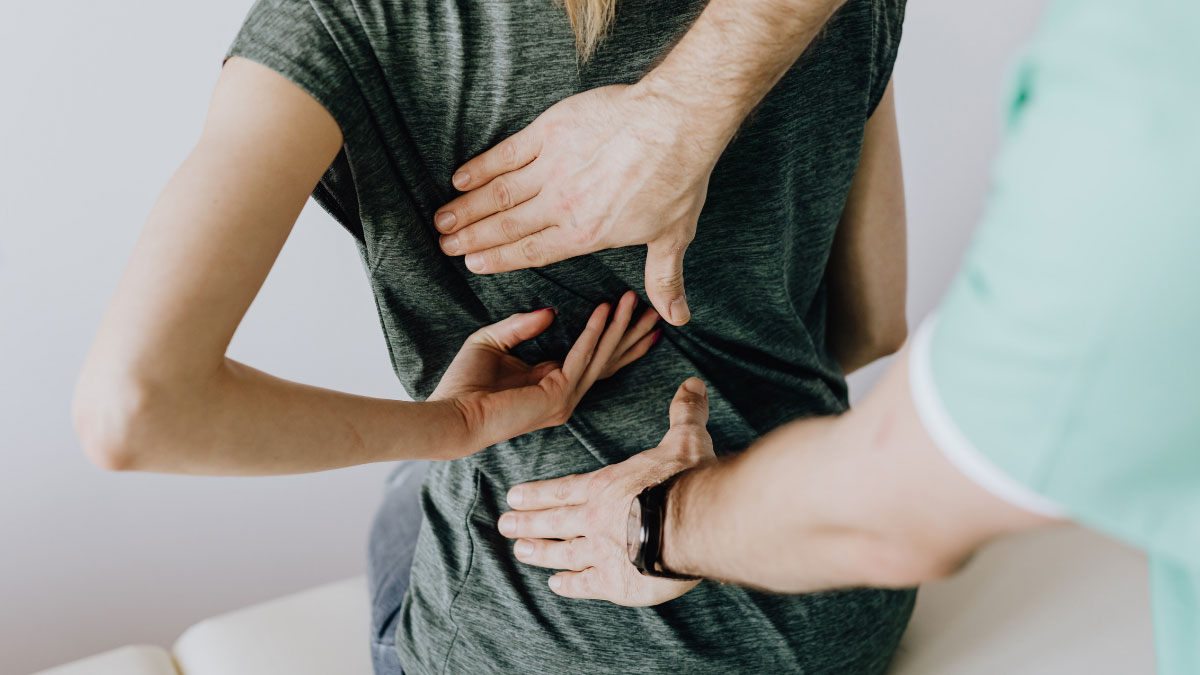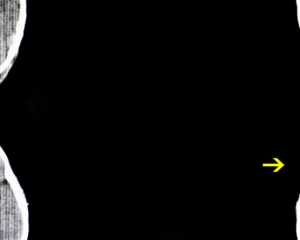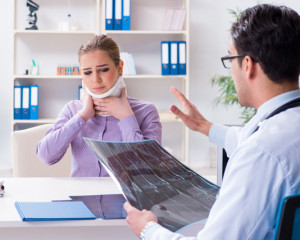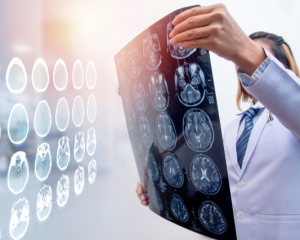Regardless of whether you feel pain immediately after a car accident, it is always a good idea to consult a health professional. Some injuries — like whiplash or soft tissue injuries — may not appear for hours or days after the auto accident. Don’t let untreated back pain lead to chronic pain and disability in the future. Be proactive and seek medical care early to prevent long term damage.
Generally, your primary care physician is not the best provider to see after a car crash. A physician that specializes in internal medicine does not always have the training or experience needed to discover, diagnose and treat the common lower back injuries sustained in an auto accident. Consider seeking medical attention from a medical expert who has experience in treating spine, joint and muscular conditions. Consider contacting us at DOCS4PI to get a referral for the best doctor for your injuries.
In this article we'll share some basic information about lower back pain and treatments that include:
- What Causes Lower Back Pain After a Auto Accident
- Self-Treatment Options for Lower Back
- Chiropractic Treatments for Lower Back Pain
- Surgery for Lower Back Pain after an Auto Accident
What Causes Lower Back Pain After a Auto Accident
A person's spine consists of many bones, muscles, joints, ligaments, tendons, and nerves. It also contains the spinal cord, one of the most fragile, sensitive structures. Injuries to any one of these parts can cause serious back pain, weakness, and disability. In car accidents, back injuries are too common because the back can suffer immense pressure from a collision.
No matter how minor your symptoms are, seek medical attention immediately if you have been involved in a car accident. If left untreated, acute back injuries can progressively worsen and lead to chronic pain.
Most lower back pain is caused by spondylosis, which is the most common lower back condition. The following are some examples of common back pain causes:
-
Whiplash.
Your neck is the most vulnerable part of the spine during an impact. Whiplash, unlike other trauma types sustained in car accidents, are quite common in rear-end collisions of “minor” speed. When a whiplash occurs, the head suddenly jolts violently backwards and forwards in an irregular motion. This causes the muscles in your neck to become stretched and tear. Most cases of mild whiplash go away on their own with time, rest, minor pain relief medications, and hot or cold compresses. Moderate to severe cases of whiplash often result in chronic pain and disability.
-
Muscle Strains and Sprains.
Your entire back, from your shoulders to your tailbone, is woven by soft tissue, including muscles, tendons and ligaments. When injured, these tissues can cause excruciating pain and spasms. It may take up to 6 weeks of treatment to completely mend a pulled back muscle or ligament, and some more severe strains might even take months to heal. Some activities and positions may be painful during the recovery period.
-
Spinal Cord Injury.
Spinal cord injuries involve damage to the bundle of nerves and tissues that connect your brain and the rest of your body; they are considered the most serious injuries of the back. In your spine, the vertebrae serve as a protective shield against injury to your spinal cord and central nervous system. Accidents that result in spinal cord damage often have long-term effects that are debilitating and permanent. There is a risk of total or complete paralysis, as well as infections and blood clots, spinal fluid leaks and other dangerous medical conditions.
-
Degenerative Disc Disease.
Spinal degenerative disorders are a group of conditions that can occur when any of the discs between the vertebrae become damaged, torn, pinched, deteriorate, or torn, causing major back pain. The degeneration of discs may result from age alone or may occur as a result of a traumatic incident such as a car accident. Discogenic pain includes shooting, sharp and debilitating pain—a pain that occurs when the disc is injured, whether you aren't moving at all or doing something that irritates it. This intense pain may spread to the thighs, butt, feet and groin. Degenerative disc disorders can result in non-surgical treatments including pain medications, steroid injections and heat/ice therapy, as well as surgical treatments such as disc removal and spinal fusion.
-
Spine Injuries.
In addition to vertebrae, facet joints are another important component to a healthy spine. These joints help with controlling movement and supporting the weight of your body. They are encased by a thick, flexible membrane to stay lubricated by a viscous fluid. When facet joints are damaged in a collision or other accident, it can be especially painful due to the large concentration of nerves surrounding the joint and spine. Traumatic events can also cause facet joint disease, which is when the facet joints degenerate. CT scans, X-rays or MRIs can usually detect facet joint injuries, and treatment may involve the help of a chiropractor.
Self-Treatment Options for Lower Back
If your pain is mild or you have to wait a day or two to be seen by a doctor, there are some self-care options that could help your lower back pain in the meantime. Some lower back self-treatment options include:
- Rest. Relieve your lower back pain by resting, which may involve reducing your activity level for a couple of days. However, in short periods, bed rest is generally not recommended as a treatment for low back pain. A pillow placed under your knees while lying on your back helps bring your spine in an ideal neutral position. It may be beneficial to prop your knees open in a 90-degree angle while lying on the floor. Rest can be helpful, but you don't want to rest for too long. Many cases of lower back pain go away on their own within a couple of days. The muscles can weaken over time when you are inactive for longer periods of time.
- Heat or Ice. Cold or hot compresses relieve back pain. Studies suggest that the use of hot or cold packs can improve mobility and reduce pain. Reduce inflammation in your lower back by putting a bag of ice or frozen vegetables on tender areas. Use an ice pack several times daily for 20 minutes or so at a time, as long as you wrap it in a towel to prevent frostbite. When you use a heating, pad do not leave on before going to bed to avoid burns. After 1 or 2 days of cold treatment, switch to heat treatment with a heating pad or warm bath. Heat will help relax the muscles that are causing the pain.
- OTC Pain Medication. Noninvasive treatment options include over-the-counter pain medication (OTC). The most effective medicines to treat muscle-related back pain are naproxen, ibuprofen, and acetaminophen. Symptoms caused by a pinched nerve or a disc problem will not be relieved by OTC medication. If your back pain doesn't subside after a few days of hot or cold compresses, and OTC pain relievers haven't helped, call your physician.
Chiropractic Treatments for Lower Back Pain
Chiropractors are health care practitioners dedicated to treating disorders of the nervous system and/or the musculoskeletal system without invasive surgical procedures. Generally, chiropractors focus on manipulation of the spinal column and treatment of the structures surrounding it. The conclusion of many studies is that traditional chiropractic treatments are generally effective for treatment of lower back pain
Chiropractors usually treat lower back pain conditions with manual therapy:
- Spinal Manipulation. Generally speaking, "chiropractic adjustment" refers to fast-moving, short-lever force applied to abnormal vertebra with the goal of improving function, reducing nerve irritation and restoring range of motion in the back. Studies have consistently supported chiropractic treatment for lower back pain. Furthermore, chiropractic manipulation has been strongly recommended in many published guidelines for treatment of lower back pain.
- Mobilization. Mobilization in chiropractic medicine refers to low velocity manipulation, movement and stretching of the joints and muscles for the purpose of increasing motion within them.
Surgery for Lower Back Pain after an Auto Accident
When the above therapies and self-care treatment options cease to ease lower back, pain caused by a car accident, surgery is considered to relieve neck and lower back pain. It is widely known that spinal and neck surgery can be very risky, but the long-term relief can often outweigh the risks. With back and neck pain reducing one’s capacity to live life, it is often necessary to undergo surgery. The surgery is often very effective in relieving patients’ pain if it is tailored to their condition.
Surgical options for lower back pain after a car accident include:
- Vertebroplasty and kyphoplasty
- Spinal laminectomy
- Discectomy or microdiscectomy
- Foraminotomy
- Intradiscal electrothermal therapy
- Nucleoplasty
- Radiofrequency denervation
- Spinal fusion
- Artificial disc replacement
How Can DOCS4PI Help?
People who have been involved in an accident of any kind can contact DOCS4PI to find the best medical professionals in their area for the treatment of their car accident injuries. We carefully screen our doctors and ensure that patients receive the best care. Our network of doctors will help treat your injuries whether it may be your lower back, neck, knee, shoulder, hands, foot, and more. We are not an attorney referral service; we are a medical referral service in Florida.





